As you know, acne is divided into 3 groups: comedonic form/comedonal acne. Appears when the pores are clogged with excess sebum and desquamated epithelial cells. Comedones can be of two types:
open — typical black dots. They appear when the sebum in the pores is exposed to air, oxidized, contaminated, blackened. Closed — white subcutaneous acne. Formed when sebum and dead cells do not have an outlet to the surface, due to which they form a fatty nodule under the skin.
Inflammatory form/papulo-pustular acne. Fat plugs — excellent breeding environment for natural bacteria. Therefore, sometimes acne can become inflamed, causing noticeable swelling and redness. There are two types of inflammatory acne: pustules — red bumps with visualization of the pustular component; papules — red bumps in which pus is not visible.
Nodular cystic acne. This is a much more serious form that develops deep into the layers of the skin. There are two forms: nodular — never forms a noticeable head with pus; cystic — very similar to pustules, but larger, more painful, sometimes itchy.
In the article estet-portal.com you can get acquainted in detail with the personal approach to the treatment of a patient with acne dermatovenereologist, cosmetologist, head and leading specialist in laser therapy of the capital's clinic "MultiMed" (Kyiv), a certified trainer of the company " ;MultiMed SCHOOL» Roman Shkolny.
Initiating Acne Treatment: Key Knowledge
R.Sh.: The pathogenesis of acne consists in hyperkeratosis of the follicle orifice, excessive production of a viscous secretion by the hormone-dependent sebaceous gland, which differs in its chemical properties from normal sebum, contamination by the bacterium Propionum аcne and inflammation. A complex effect on all 4 links of pathogenesis allows you to effectively eliminate the problem of acne.
A patient with acne should undergo a consultation with a gynecologist-endocrinologist to exclude and correct endocrinological pathology.
Complex therapy is important, but laser technologies allow leveling the infectious agent and inflammation.
Follow us on Telegram
The role of retinoids and antibacterial agents in acne
R.Sh.: In the presence of comedones, topical retinoids should be preferred, because the key mechanism for the formation of comedones is blockage of keratinocytes at the follicle orifice.
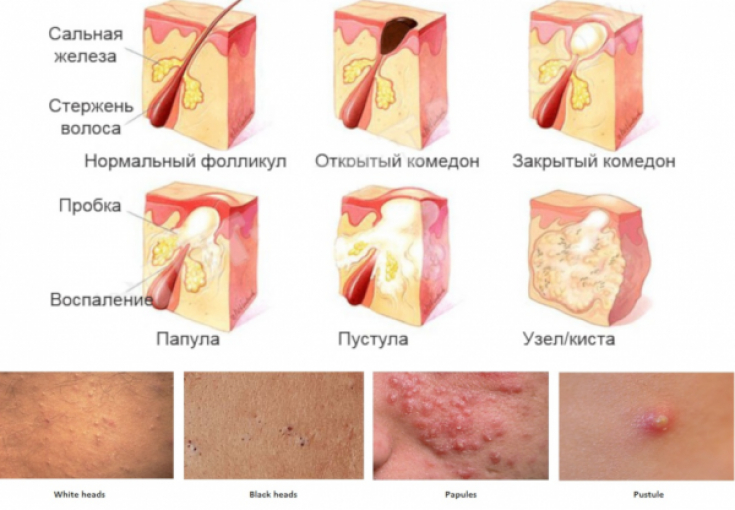
Personally, I prefer to use micronized adapalene gel in topical therapy (strength of therapeutic recommendation for level A comedonal acne) in combination with clindamycin or benzoyl peroxide.
Insolation contributes to the formation of post-inflammatory hyperpigmentation.
Antibacterial therapy cannot be monotherapy, but it successfully influences one of the links of pathogenesis. Personally, I prefer to prescribe antibiotics for a short term — approximately 7-10 days. This period is due to the combined use of laser technologies, which also affect the infectious agent.
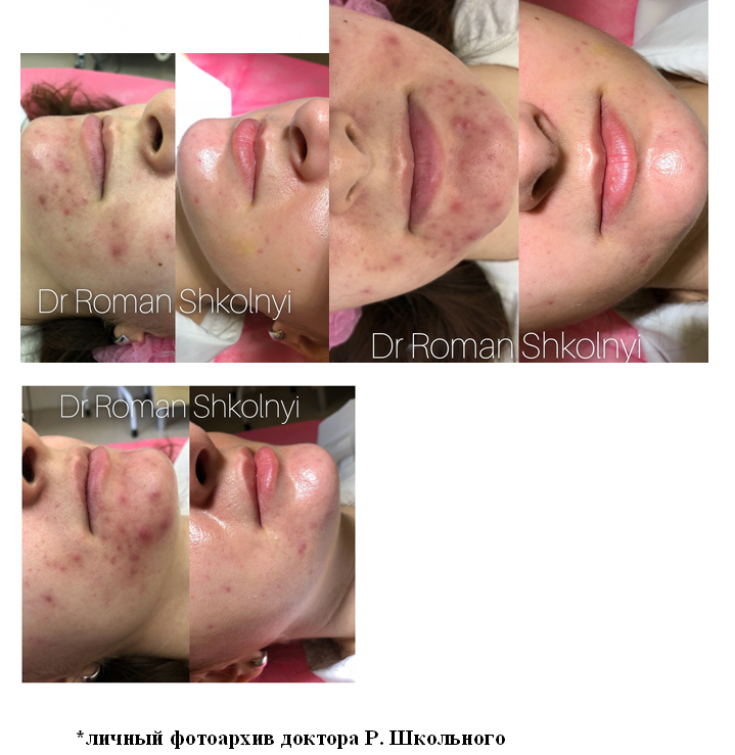
Special considerations for low-irritant topical retinoids
Working with acne: preparing for laser treatment
R.Sh.: in acne, the use of iPRF-therapy (a variant of plasma therapy: the introduction of fibrin-rich plasma) can reduce the inflammatory phase and prevent post-acne. And the increase in the regenerative potential of the skin against the background of plasma therapy allows you to create effective therapeutic combinations with ablative lasers (erbium, CO2 lasers) or even with a dermaroller, while avoiding the negative consequences of these aggressive techniques and getting an aesthetically attractive result faster.
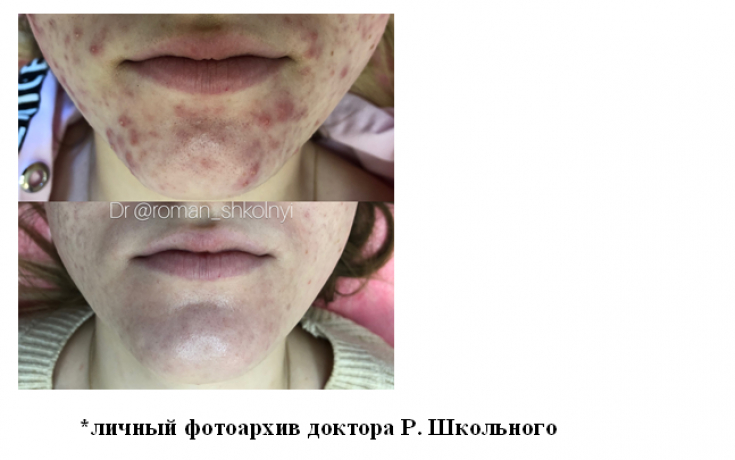
If you ignore this simple rule, which is to prepare the skin for laser treatment, you can get such an undesirable phenomenon as the "gauze effect", since the skin that undergoes alteration must have sufficient regenerative properties for a full recovery, which actually provides plasma therapy. either a course before laser ablation, or a combination of them on the day of the procedure itself: the creation of the so-called "pillow"; by injecting fibrin-rich plasma.
"Gauze Effect" — this is a complication of fractional laser rejuvenation, which is a network of atrophic scars on the surface of the skin of the face and body.
Working with acne: the importance and scope of laser technologies
R.Sh.: Laser technologies always play the role of additional methods when dealing with acne within the framework of conventional medicine. Thus, first of all, I use the world's protocols for acne therapy, aimed at the root cause of the appearance of rashes, and the selective vascular laser (577nm) allows, for example, to level post-inflammatory erythema.
The main purpose of the yellow laser is to coagulate blood vessels.
The green laser (532 nm), in turn, allows you to effectively, sometimes even in one procedure, get rid of pigmentation.
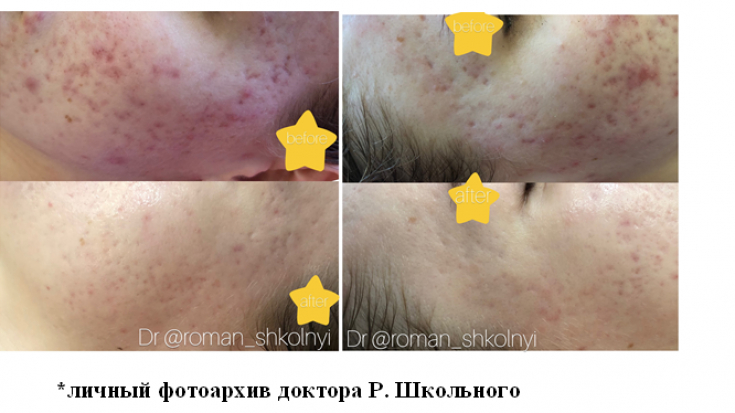
In my practice, I use a CO2 laser for laser ablation. Due to selective fractional photothermolysis, post-acne scars are corrected.
How to restore the skin after acne: the effects of redermalization
Possibility of influencing active inflammatory elements
R.Sh.: Another niche of lasers is the additional, concomitant effect on inflammatory elements during the initial phase of acne treatment. I achieve extremely positive results using the yellow laser directly during primary therapy. There are several studies that claim that the effect of the laser on active inflammatory elements allows you to sanitize the area, destroying the bacterial component. Also, an integral weighty component of a favorable outcome is the stimulation of repair processes.
The use of laser techniques during the initial stages of acne treatment allows faster remission.
Use a yellow laser (577 nm) when working with active components once a week, at least three times.
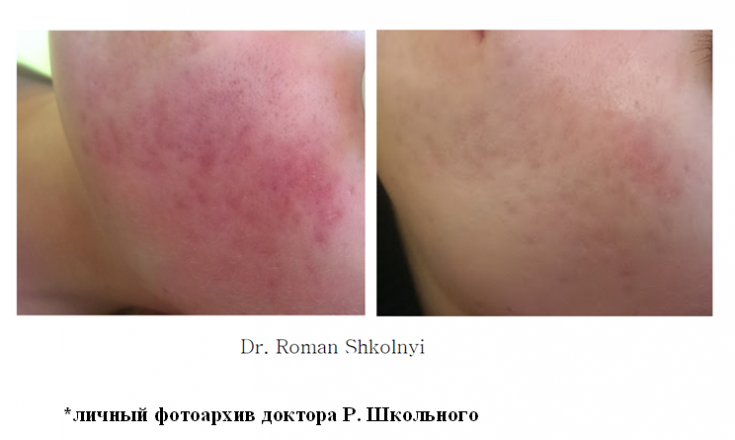
However, it should be remembered that such a format for using a yellow laser is not documented, therefore, it requires increased caution and qualification of a dermatologist, like any off-label application.
Risk of adverse outcomes with lasers
R.Sh.: With the correct adjustment of the yellow laser, it is possible to achieve an anti-inflammatory effect due to the effect on the vessels, their diameter, patency and plethora. Setting adequate fluence and pulse width ensures that target structures are affected.
Green vascular laser should not be used with Fitzpatrick skin phototype 4-5-6.
The so-called burn can occur after exposure to lasers when the fluence is exceeded, when, due to inappropriate heating, the effect will extend not only to tissues containing a chromophore, but also & nbsp; on the surrounding tissues.
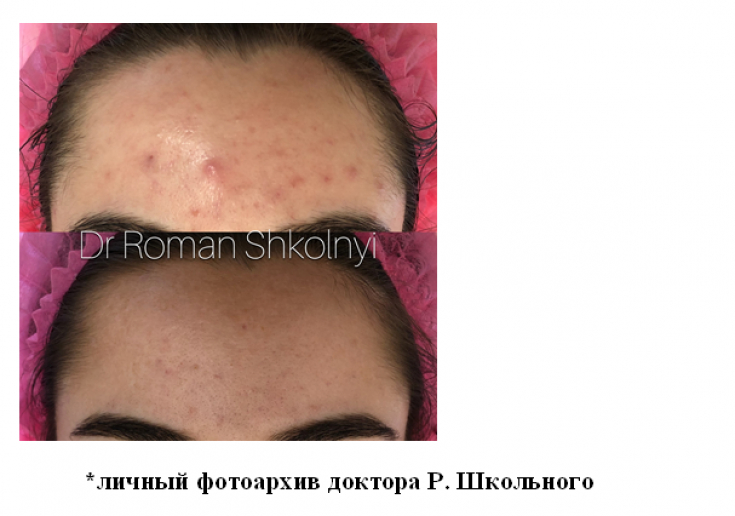
Visually, this effect will be accompanied by whitening of the skin area and the formation of a crust subsequently. The key and primary tactics of the doctor in such a situation is to constantly moisten this crust (silicone-containing reparants, combinations of dexpanthenol, hyaluronic acid and antibiotics), to prevent injury and insolation.
Yellow laser almost never burns.
Thank you for staying with estet-portal.com. Read other interesting articles in the "Cosmetology" section. You may be interested in Vitamin C for acne: how it works







Add a comment